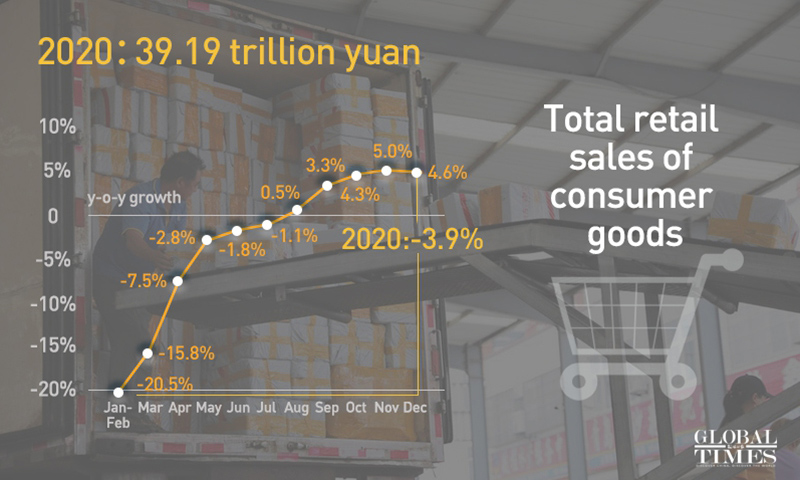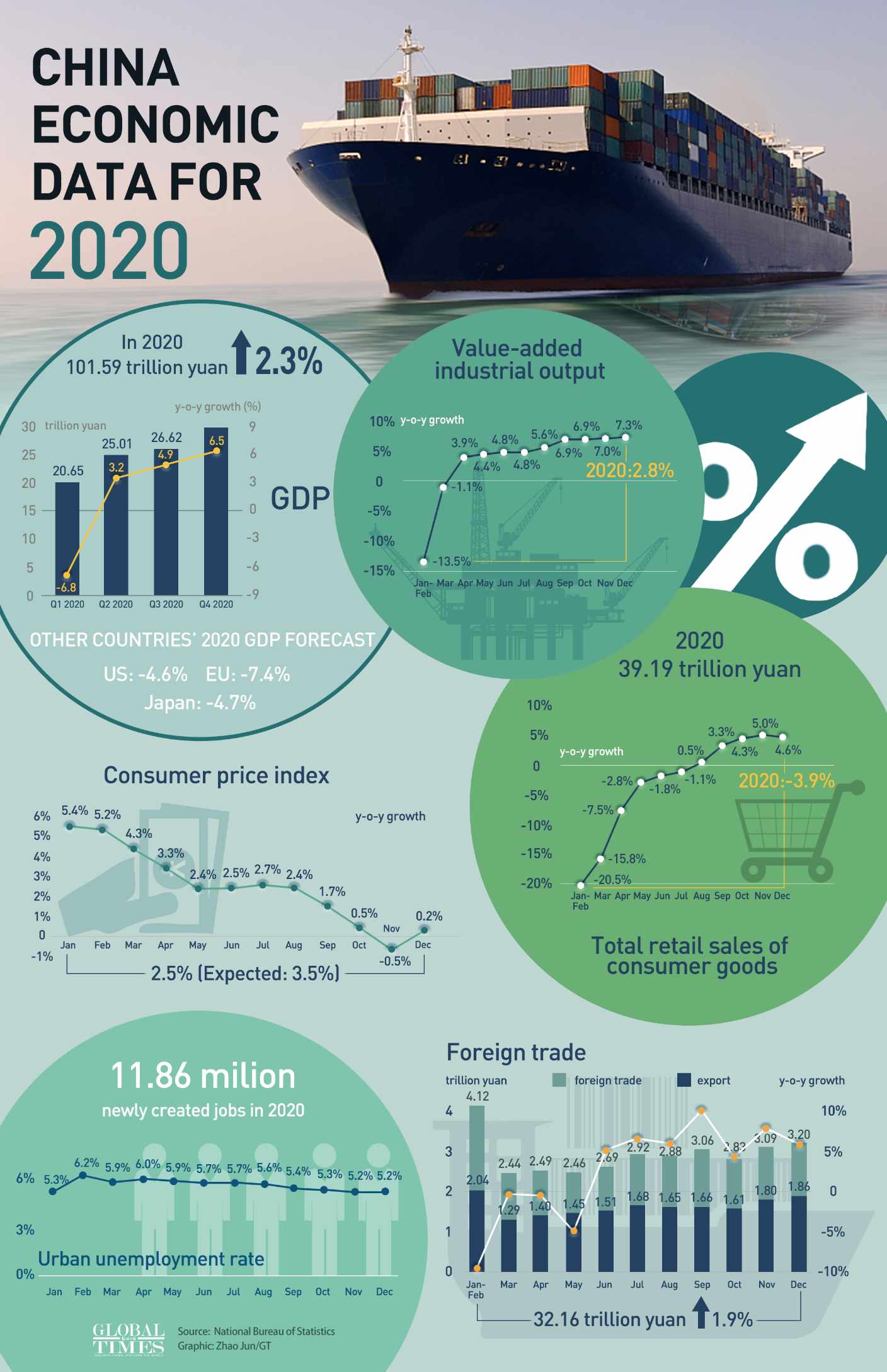

China's GDP topped 100 trillion yuan ($15.4 trillion) for the first time in 2020, marking a milestone that demonstrates China's economic, technology strength and the country's comprehensive national power has embarked on a huge new step, Chinese officials said.
China's GDP grew 2.3 percent to 101.6 trillion yuan in 2020, meaning it is expected to be the only major economy in the world to have positive growth, according to data released by the National Bureau of Statistics (NBS) on Monday. It also marked the first time that the country's economic volume stepped into a new era to exceeding 100 trillion yuan.
This economic output has a "very important symbolic meaning" for China as it completes its task of building a moderately prosperous society in all aspects — a goal laid out in its 13th Five-Year Plan (2016-20) — and leads into the new journey in 2021 which involves building a great modern socialist country in an all-round way, Ning Jizhe, head of NBS, said at a press briefing on Monday in Beijing.

Total retail sales of consumer goods (Infographic/GT)
The year 2021 marks the first year of China's 14th Five-Year Plan (2021-25) period.
In 2020, Chinese residents' per capita disposable income was 32,189 yuan, doubling that of 2010, NBS data showed.
It also aligns with a goal set out in the 13th Five-Year Plan: the per capita income of both rural and urban Chinese residents should be double 2010's amount by 2020.
What's more, the country also achieved decisive success in eradicating extreme poverty, meaning the 13th Five-Year Plan had come to a satisfactory conclusion, Ning said.
Chinese observers said that the country has essentially achieved the economic goals laid out in the 13th Five-Year Plan, with some even being accomplished ahead of schedule.
"China has been making plans to complete long-term goals step by step. Unlike some Western countries where politicians make empty promises, Chinese policymakers take a pragmatic approach and employ multiple policy tools to meet set targets,” Wang Yiwei, director of the Institute of International Affairs at the Renmin University of China, told the Global Times on Monday.

A Hema Fresh store in Pudong of east China's Shanghai. (Photo/Xinhua)
By 2035, China’s per capita GDP will reach that of a “middle-level advanced country,” with a significantly bigger middle-income group at home, according to the communique of the fifth plenary session of the 19th Communist Party of China (CPC) Central Committee released in November, which set sweeping targets for the 14th Five-Year Plan (2021-25) and long-range goals through to the year 2035.
In the past two decades, China's economic volume has expanded 10 times, and the world's second-largest economy now accounts for about 17 percent of the total global economy, according to Ning.
He also noted that China's per capita GDP exceeded $10,000 for two consecutive years, making it "a member of the upper middle income countries and narrowing the gap with high-income countries."
China's technological capacity has also improved as the country's economic volume climbs to a new height.
Ning exemplified by the Chang'e 5 lunar probe, Tianwen-1 Mars probe, opening of the world's largest radio telescope (FAST), launch of the Beidou-3 navigation network, and diving of manned submersible Fendouzhe (Striver).
Social productivity in terms of industrial and agricultural output also improved.
China's grain output reached a record high in 2020, and has been world champion for years. The track length of China's high-speed railway reached 38,000 kilometers, and its 5G-connected terminals surpassed 200 million, both leading the world, Ning noted.
He stressed that these milestone achievements laid a solid foundation for China to build a new development path based on the "dual circulation" strategy — a strategy which involves emphasizing both domestic and international markets.

China economic data for 2020. (Graphic/GT)

 Award-winning photos show poverty reduction achievements in NE China's Jilin province
Award-winning photos show poverty reduction achievements in NE China's Jilin province People dance to greet advent of New Year in Ameiqituo Town, Guizhou
People dance to greet advent of New Year in Ameiqituo Town, Guizhou Fire brigade in Shanghai holds group wedding
Fire brigade in Shanghai holds group wedding Tourists enjoy ice sculptures in Datan Town, north China
Tourists enjoy ice sculptures in Datan Town, north China Sunset scenery of Dayan Pagoda in Xi'an
Sunset scenery of Dayan Pagoda in Xi'an Tourists have fun at scenic spot in Nanlong Town, NW China
Tourists have fun at scenic spot in Nanlong Town, NW China Harbin attracts tourists by making best use of ice in winter
Harbin attracts tourists by making best use of ice in winter In pics: FIS Alpine Ski Women's World Cup Slalom
In pics: FIS Alpine Ski Women's World Cup Slalom Black-necked cranes rest at reservoir in Lhunzhub County, Lhasa
Black-necked cranes rest at reservoir in Lhunzhub County, Lhasa China's FAST telescope will be available to foreign scientists in April
China's FAST telescope will be available to foreign scientists in April